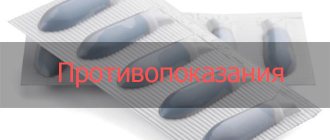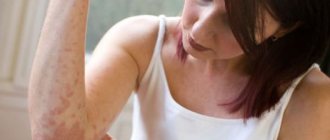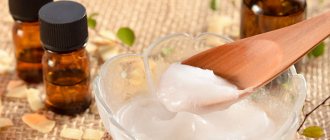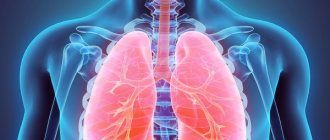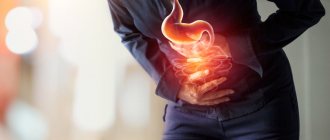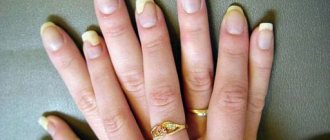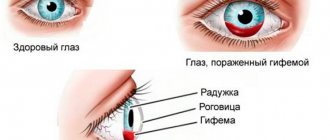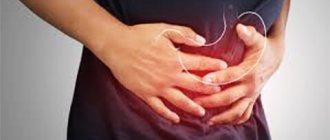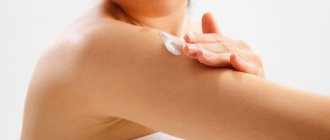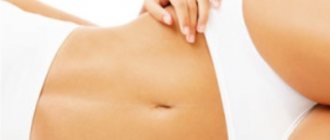Breast mastopathy is a fairly common pathological disease. The cause of its occurrence is hormonal imbalance, which leads to an increase in trophic changes in connective and fibrous tissue. This leads to the appearance of nodular or cystic seals in the body of the mammary gland.
The maximum increase in this disease is observed in women aged 30-45 years. The main cause of mastopathy (breast dysplasia) is an excess of estrogen and a lack of progesterone. Much less frequently, mastopathy can be caused by increased synthesis of prolactin, which is produced by the pituitary gland.
There are many methods of conservative therapy, which, in consultation with the doctor, give positive dynamics in the treatment of this pathology. The main thing is to contact a gynecologist at the first signs of changes in the mammary gland; the sooner therapy begins, the greater the likelihood of being cured of this disease.
Mastopathy: brief description
Mastopathy is a benign tumor-like growth of glandular tissue in the mammary glands, causing the appearance of painful lumps and cysts. Caused by hormonal imbalance in the body (increased estrogen levels, decreased progesterone).
Occurs when:
- hereditary predisposition;
- medical, surgical abortion;
- menopause, premenstrual period;
- lack of breastfeeding;
- long-term hormonal therapy;
- stressful situations;
- chest injury.
The disease is accompanied by unpleasant symptoms, swelling, spasms in the mammary gland, and clear, white discharge. An exacerbation of symptoms occurs in the 2nd phase of the menstrual cycle.
They differ:
- Involutive mastopathy – associated with depletion of glandular tissue due to a decrease in the amount of sex hormones.
- Fibrous – characterized by a strong proliferation of fibrous (connective) tissue, discomfort, enlargement of the mammary glands, deterioration of blood circulation, and the appearance of discharge from the nipples.
- Glandular - causes an increase in the size of the milk ducts and the appearance of cysts. It is dangerous due to strong calcification of the liquid content of the seals, causing malignant degeneration.
- Diffuse is the most common form, manifested by an increase in the amount of adipose tissue under the influence of an imbalance of the pituitary gland.
- Cystic - manifested by the formation of hollow cysts filled with fluid.
- Nodular - in the process of replacing glandular tissue with connective tissue, nodes of different sizes (up to 5 cm) are formed.
- Fibrocystic - occurs when dense areas of adipose tissue form in the mammary gland. Most often diagnosed in women between 30 and 45 years old with a decrease in progesterone levels.
How to treat mastopathy?
Treatment of the disease is a prerequisite when mastopathy is detected.
Medical tactics depend on several factors, including:
- Age of the woman requiring treatment for mastopathy;
- Existing concomitant pathologies – endocrine, extragenital, gynecological;
- Form of the disease;
- The desire to preserve reproductive function, or, on the contrary, the priority of contraception;
- The nature of the menstrual cycle.
Conservative treatment of mastopathy is possible if a diffuse form of the disease is detected. The prescription of drugs occurs after consultation with a mammologist and a thorough examination of the patient.
As for fibrocystic formations, conservative therapy is possible, however, surgical intervention may be required. If the suspicion of a malignant tumor is confirmed, its removal is mandatory.
Sectoral resection of the mammary gland is used as the optimal surgical technique. In this case, the woman’s breast is preserved, and the fibroadenoma itself and part of the glandular tissue are excised. The operation is performed under general anesthesia. The incisions to be made are marked in advance. Everything is done under ultrasound control, which allows minimizing cosmetic defects.
Read more: how to treat breast mastopathy?
Main symptoms of the disease
Symptoms of the disease:
- nagging, aching, bursting pain in the mammary gland;
- nipple sensitivity;
- transparent white discharge (blood may appear);
- changing the shape of the nipples;
- transformation of the mammary glands;
- swollen lymph nodes;
- weakness, apathy;
- insomnia;
- loss of appetite;
- small compactions (nodules) that change shape and location depending on the menstrual cycle.
The disease is characterized by several stages:
- It is asymptomatic . There may be a feeling of fullness, engorgement of the breasts, and discharge from the nipples in the second phase of the menstrual cycle, caused by an increase in the dose of estrogen.
- The disease transforms without lack of treatment . Manifested by the formation of fibrosis. Pain occurs, caused by the pressure of the seals on the blood vessels, and blood discharge from the nipples.
Massage for fibrocystic mastopathy
Massage is a good way to normalize blood circulation, relieve swelling and reduce pain. You can perform a massage yourself only on the recommendation of a doctor.
Contraindications for massage will be:
- increased body temperature above 36.9;
- established diagnosis - malignant breast tumor;
- presence of damage to the skin;
- allergic reaction in the chest area;
- the presence of any inflammatory process in the body.
Massage can be done only at the initial stage of the disease. Movements should be soft, without pressing. All movements are performed along the path of lymph flow - from the nipple to the periphery of the mammary gland.
Active movements can aggravate the development of the disease. Avoid exposure to armpits and nipples.
For mastopathy, the following techniques are acceptable:
- First, the breasts are gently massaged while taking a shower. Next, you can massage the seals directly with your fingertips, using circular movements, moving in a circle.
- Preparation – soft stroking. Next, begin zigzag movements. The massage ends with the method of vibration or palsing - small oscillatory movements are created.
- To normalize blood circulation, massage of the back, upper and lower parts is effective. This type of influence should be entrusted to a massage therapist.
With timely diagnosis and a full range of therapy, cystic fibrous mastopathy has a good prognosis. This disease can develop for a long time without obvious symptoms. Such an unexpressed condition can only be revealed by a preventive examination, which must be performed regularly.
Article design: Mila Friedan
Diagnostic methods
To diagnose mastopathy, the following is carried out:
- Patient interview . During the conversation, the specialist finds out the nature of the pain and the presence of discharge. Takes a history of endocrinological and gynecological pathologies, is interested in hereditary predisposition, the number of abortions, and pregnancies.
- Palpation examination is carried out with the fingers and palms. Allows you to determine the appearance of lumps in the mammary gland.
- Mammography . X-ray examination of the chest. Determines neoplasms, their type, shape. It is mandatory for women over 35 years of age.
- Ultrasound of the mammary glands . It is prescribed to diagnose the disease, its type, shape, size.
- Pneumocystography . The procedure is combined with ultrasound diagnostics. It involves introducing air into the area of the tumor using a thin needle. The cyst expanded in this way is thoroughly studied on the monitor.
- Ductography . A diagnostic method consisting of studying the patency and condition of the milk ducts using a dye introduced into the body through the nipple.
- Magnetic resonance imaging.
- Hormonal diagnostics . A comprehensive study of blood and cells for the presence of estrogen and progesterone in a woman’s body.
- Consultation with an endocrinologist, gynecologist.
- Biopsy – carried out to examine the biomaterial for the presence of atypical cells. Mandatory after the diagnosis of nodular mastopathy.
- Clinical diagnostic study of blood for concomitant pathologies, inflammatory processes, hormones.
Surgery
Operative therapy is used extremely rarely.
This treatment method is prescribed when the above methods do not produce positive results. But the operation does not eliminate the causes of the development of this pathological process. Therefore, relapses occur very often, which requires repeated surgical intervention.
Typically, surgery is performed when cystic lumps appear in the mammary gland, which contain a large amount of hemorrhagic content.
For this purpose, the patient is placed in an inpatient oncology clinic.
The operation can be performed by removing the affected area. If the cyst is not isolated, there is a need for extended resection of the mammary glands. In advanced forms, a complete ectomy occurs, followed by mammoplasty.
If after surgery, the histological examination gives a positive reaction to atypical cells, it becomes necessary to undergo a course of chemotherapy.
Features of the disease in women after 30 years
In women aged 30 to 40 years, mastopathy manifests itself in the 2nd phase of the menstrual cycle. The disease is triggered by hormonal imbalance. Age-related pregnancy and the accompanying release of prolactin and oxytocin activate the development of pathology.
Causes:
- late birth (after 30 years), complete absence of pregnancies;
- inflammatory gynecological processes;
- a history of medical and surgical abortions;
- endocrine disorders;
- inability (unwillingness) to breastfeed;
- long-term use of hormonal contraceptives;
- the presence of hereditary breast pathologies;
- severe susceptibility to stress.
Mastopathy at the age of 30 to 40 years manifests itself:
- pain, engorgement of the nipples and mammary glands, growing 1 week before the start of the menstrual cycle;
- discharge from the nipples of a transparent, pale white hue;
- increased sensitivity of the breast;
- the appearance of small compactions;
- enlarged lymph nodes.
Most often, 30-year-old women are diagnosed with diffuse type fibrous mastopathy.
For treatment, hormonal medications, vitamin complexes are prescribed, and a diet is prescribed with the complete exclusion of coffee, alcohol, and products containing iodine.
Fibrocystic, nodular is determined in approximately 10% of women in this age group. Nodular formations develop under the influence of endocrine dysfunctions or hereditary predisposition to pathology.
Why is it better to check for mastopathy here?
- Experienced and qualified specialists - our clinics employ obstetricians-gynecologists, gynecologists-endocrinologists, and mammologists.
- We prescribe and carry out not only medication, but also surgical treatment (if necessary).
- We use high-quality and safe diagnostic equipment that does not harm your health and is suitable even for pregnant and lactating women.
For more information about the cost of consultation with our specialists, registration and preparation for the examination, please contact our manager +7 495 790-35-53.
Features of the disease in women after 40 years
After 40, women begin to experience hormonal imbalances in their bodies. Fertility decreases and hormonal levels become destabilized. The amount of estrogen increases, the production of progesterone decreases. Premenopausal syndrome is accompanied by the gradual replacement of glandular tissue with adipose tissue, during which nodules, cysts, and compactions are formed.
Typical for this age:
- Fibrous mastopathy – characterized by the proliferation of connective tissue. It manifests itself as chest pain; at a later stage, it is possible that an infection may occur, causing purulent discharge from the nipples.
- Cystic pathology - manifested by the presence of benign neoplasms in the breast, filled with liquid contents.
- Nodular – diagnosed when nodules are detected.
Symptoms of the disease:
- swelling of breast tissue;
- engorgement of nipples before menstruation;
- discharge from the mammary glands of a transparent, white shade;
- breast tenderness;
- formation of small nodules.
Factors that provoke the appearance of the disease after 40 years:
- late birth or abortion (after 35 years);
- infertility;
- hereditary predisposition;
- endocrine pathologies;
- stress;
- obesity.
Features of the disease in women after 50 years
After 50 years, the female body enters the period of menopause. The functional characteristics of the body fade away, reproductive function disappears. The immune system weakens, the production of sex hormones decreases, and pathological changes appear in organs and structures.
A sharp decrease in progesterone provokes the proliferation of connective tissue in the mammary glands. Cysts filled with liquid contents and nodes of different sizes appear.
The appearance of mastopathy at this age is determined by:
- hormonal disruptions that occur due to dysfunction of the pituitary gland;
- decreased activity of the thyroid gland;
- little process of breastfeeding (lack of it);
- late birth;
- chest injuries;
- smoking, alcohol abuse;
- mastitis;
- hereditary predisposition;
- irregular sex life;
- gynecological pathologies;
- long-term stress.
For this age, the development of diffuse pathology in the form of fibrocystic mastopathy, manifested by a strong proliferation of adipose tissue under the aggressive influence of estrogen, is most typical. The nodular form (about 45% of all diagnosed cases of the disease) is manifested by the proliferation of nodular neoplasms of various sizes and shapes (up to 5 cm in diameter).
Symptoms of the pathology:
- severe chest pain, accompanied by high sensitivity, swelling, and violation of the asymmetry of the glands;
- discharge from the nipples is brownish-yellow in color, blood clots and pus may appear;
- tuberosity of the surface of the chest.
Causes
The etiological factors and the mechanism of development of the disease are caused by hormonal imbalance. The leading role in the formation of mastopathy is given to conditions in which there is progesterone deficiency, impaired ovarian function and/or absolute or relative hyperestrogenism. This is due to the fact that estrogens promote the proliferation of epithelium in the alveoli, milk ducts, and enhance the activity of fibroblasts, which causes proliferation of the stroma. Also in the mechanism of formation of the disease, hyperprolactinemia and excess prostaglandins are also important (causing mastodynia, and then mastopathy). For the development of hormonal imbalance, the action of provoking factors is necessary. But even with their existence, mastopathy does not develop immediately, since it requires their long-term influence (several years) and “layering” of one factor on top of another. Such provoking factors include:
- early menarche (early puberty, up to 12 years, leads to rapid hormonal changes, which also affects the condition of the mammary glands);
- late menopause (cessation of menstruation after 55 years is also unfavorable for the mammary glands due to prolonged hormonal effects on their tissue);
- termination of pregnancy (a sharp hormonal decline after an abortion or miscarriage leads to hormonal disorders and the development of mastopathy);
- there were no pregnancies or childbirths at all;
- short period of lactation or categorical refusal to breastfeed;
- heredity (benign and malignant breast diseases in women on the maternal side);
- age (over 35);
- stress as a cause of endocrine pathology;
- bad habits;
- injuries to the mammary glands, compression of the chest by a tight and uncomfortable bra;
- inflammatory processes of the mammary glands;
- hormonal-dependent gynecological diseases (cycle disorders, anovulation and infertility, fibroids, endometriosis);
- iodine deficiency;
- pathology of the liver, thyroid gland;
- obesity (adipose tissue acts as an estrogen depot, and their excess leads to hormonal disorders);
- tumors of the hypothalamus and/or pituitary gland (failures in the production of FSH and LH lead to hyperestrogenism);
- irregular sex life or dissatisfaction with sex, which contributes to stagnation of blood in the pelvic organs and, as a result, causes dysfunction of the ovaries and hormonal imbalance.
The role of vitamins in the treatment of mastopathy
Treatment of mastopathy in women involves complex therapy with the mandatory inclusion of vitamin complexes. Microelements help regulate metabolism, restore the immune and nervous systems, and prevent the appearance of atypical cells.
The task of vitamin complexes:
- enhance the effectiveness of medicinal products used in conjunction with minerals;
- activate the body's immune cells;
- stabilize the nervous system;
- normalize ovarian function;
- improve liver function to normalize hormonal metabolism.
Vitamins necessary for the treatment of mastopathy:
| № p/p | Name of vitamin | Therapeutic effect |
| 1. | Vitamin E | Women's vitamin:
|
| 2. | Retinol |
|
| 3. | Ascorbic acid |
|
| 4. | Vitamin D + calcium |
|
| 5. | Group B |
|
| Prohibited for use: | ||
| Folic acid | Increases the risk of breast cancer | |
| Vitamin K | Thickens the blood, promotes thrombus formation | |
Herbal teas for mastopathy
Ready-made teas for mastopathy have the advantage of being easy to prepare. They are sold ready-made. You just need to brew them in a teapot and drink them like regular tea.
For breast problems, you can use the following teas:
- Monastic tea – consists of celandine, calendula, dandelion, oregano, plantain. It has a calming effect on the glandular part of the breast, inhibiting the growth process. Normalizes hormonal balance, including the amount of prolactin.
- Koporye tea is made from fireweed , that is, from fireweed. This herb has a good effect on women's health - it reduces the risk of tumors, reduces pain, relieves inflammation, and helps to calm down in an unstable emotional state.
- Large leaf green tea - helps cleanse the body of pathogenic bacteria and increase the body's resistance.
What vitamins should you take?
How to treat mastopathy in women is determined by a mammologist after determining the type of pathology. If a fibrocystic form is detected, vitamin and mineral complexes are used to normalize metabolic processes and improve the body's protective functions.
Aevit
A combined vitamin complex consisting of a combination of vitamins A and E.
Pharmachologic effect:
- a strong antioxidant that prevents tissue degeneration and damage to cell membranes;
- a cofactor involved in enzymatic systems and biochemical processes;
- increases resistance to hypoxia;
- normalizes hormonal function;
- strengthens capillaries;
- prevents the development of mastopathy.
The drug is prescribed in a course of 1 drop. daily for up to 30 days. This is followed by a 3-month break in order to prevent the development of side effects caused by an overdose of the drug. The tablet is swallowed whole, washed down with water after meals.
The use of vitamins is prohibited for persons suffering from:
- cholecystitis;
- liver cirrhosis;
- thyrotoxicosis;
- viral hepatitis;
- calcium deficiency.
Aevit should not be prescribed to pregnant women and children under 18 years of age.
Feokarpin
A biologically active food supplement made from pine and pine needle resin. Easily absorbed by the body.
Pharmacology:
- has antioxidant properties;
- prevents the development of cancer pathologies;
- improves blood circulation of tissues and blood vessels;
- slows down the aging process;
- normalizes the level of lipids and cholesterol in the blood;
Components of Feokarpin:
- chlorophyllipt derivatives;
- carotenoids;
- vitamin E;
- vitamin K;
- phytosterol;
- macro- and microelements;
- fatty acid;
- polyprenols;
- essential oils.
Prescribed 1-2 tablets. in the morning and evening for 1 month. The drug should not be used by children under 12 years of age.
Triovit
Vitamin complex enriched with mineral compounds. Presented in capsules with a gelatin shell of red-orange color.
Contains:
- tocopherol;
- retinol;
- vitamin C;
- yeast;
- selenium.
Pharmacological properties:
- has anti-inflammatory, anti-edematous, disinfectant, immunomodulatory qualities;
- stabilizes the amount of lipoperoxides that prevent the appearance of new free radicals;
- normalizes estrogen levels;
- prevents the development of oncology;
- slows down the aging process;
- removes toxic substances from the body.
It is prescribed for the treatment of fibrocystic mastopathy, since it contains mineral substances that stop the development of pathology. Take 1-2 capsules per day for 2 months. The drug is not allowed to be used by children under 15 years of age.
Vetoron
Medicine prescribed for the treatment of mastopathy. Available in the form of a dark orange liquid.
Antioxidant that helps:
- normalize the action of enzymatic systems and metabolic processes of the body;
- protect cells from the aggressive effects of active oxygen and UV rays;
- prevent the formation of peroxide compounds that provoke the destruction of the cell membrane;
- eliminate hemolysis of red blood cells;
- restore blood circulation;
- increase resistance to hypoxia;
- adjust the rational functioning of the nervous and muscular systems;
- regulate blood clotting;
- stabilize the formation of steroid hormones, the synthesis of collagen and prolactin.
Components:
- betacarotene;
- tocopheryl acetate;
- ascorbic acid;
- macrogol glyceryl hydroxystearate;
- sorbic acid.
Prescribes a course of up to 30 days, 6 drops daily. It is not recommended to take Vetoron for people suffering from hypersensitivity to the active components of the drug.
Compresses for mastopathy
A compress for breast diseases is the best way to deliver the medicinal substance directly to the source of the problem. Applications differ in the form in which the ingredients are applied - dry or wet.
If a dry compress is made, then raw plant leaves are used. It is better to do it before bed, insulate it with a shawl or woolen scarf and leave it on all night.
For dry application you can use:
- Blooming Sally. The leaves need to be lightened a little
- White cabbage. You can also crush or cut it a little.
- Birch leaves. You need to collect greens in the forest, away from highways. The younger the tree, the better.
- Rowan leaves.
- Burdock.
- Currant leaves.
Wet compresses are made for up to 6 hours. Fresh or winter-dried plants are used for preparation. In winter, you need to fill them with water and then chop them - grate them or use a meat grinder with the function of chopping vegetables. Fresh plants can be immediately chopped and used.
The medicinal mass is laid out on the painful chest and fixed with a warm cloth.
The following ingredients are used for preparation:
- honey and propolis;
- homemade aloe juice;
- celandine mass;
- beets, you need to grate them and mix them with des. l. honey;
- burdock root - it can be dried for the winter;
- cosmetic clay, it needs to be diluted to a thick sour cream.
Hormonal drugs for mastopathy
How to treat mastopathy in women is determined by a mammologist after a palpation examination, X-ray examinations, and a blood test. Hormonal therapy is used to reduce the proliferation of connective tissue and reduce pain. It is prescribed after a blood test for the content and amount of hormones.
The recipe consists of:
- Oral estrogen-gestagen contraceptives (Zhanin, Marvelon, Non-ovalon), which have a protective effect. The drugs normalize hormonal levels, reduce estrogen production, and eliminate the problem of the luteal phase. Contraceptives are used to treat gynecological diseases, fibrocystic mastopathy. Use 1 tablet. 21 day. Reception is resumed after 7 days.
- Tomoxifen is an anti-estrogen with an anti-tumor effect. The drug blocks estrogen receptors and stops the development of cancer pathologies. It is recommended to use 1 drop/2 drops per day.
- Gestagens (Duphaston, Norethisterone, Orgametril), used in the absence of the 2nd phase of the menstrual cycle. Containing artificial progesterone, the drugs stabilize hormonal fluctuations, restore prolactin levels, and stop the increased activity of estrogen, which causes active activity of adipose tissue. Take 1 tablet, starting 14 days after the last menstruation. It is necessary to take the medicine for at least 10 days.
- A prolactin production inhibitor ( Parlodel) prescribed in case of decreased estrogen levels. The medication is used in rare cases in women under 35 years of age. Prescribed 1 tablet/2-3 times a day. The duration of the appointment is determined by the mammologist.
- Ganadotropin-releasing antagonists (Zoladex, Buserilin) reduce the level of sex hormones, causing artificially reversible menopause to activate reverse processes in mastopathy. Prescribed for the treatment of a disease that threatens to develop into an oncological hormone-dependent pathology. Dosage: 1 capsule of the drug is injected into the abdominal cavity every 28 days.
Difference between malignant tumors
Women should constantly self-examine. By palpating the mammary glands once a week, it is possible to track warning signs at the initial stage.
◐ Malignant tumors do not decrease in size upon the onset of menstruation.
◑ Hormonal therapy gives a positive result in 99% if the formations in the breast are benign in nature.
◐ If the tumor is the size of a pea or bean, the lymph nodes nearby the chest are already enlarged. Therefore, feel the armpit when your arm is raised. Next is the collarbone and neck.
◑ Visit a gynecologist, even if there are no complaints, at least once every six months if you are diagnosed with fibroadenoma.
◐ Modern methods of diagnosing mastopathy - ultrasound and mammography.
Non-hormonal agents
How to treat mastopathy in women is determined by a specialist depending on the cause of the pathology. Non-hormonal therapy is used to normalize the functioning of the pituitary gland, reduce sensitivity, and mastalgia pain syndrome.
Preparations:
- Mamoklam – a non-hormonal, antitumor medication prescribed to eliminate the manifestations of mastopathy and pain syndrome. Promotes cyst regeneration. Normalizes the processes of proliferation of the mammary gland epithelium. Contains: Clam substance, fatty acids, iodine, aerosil. Take 1-2 tablets/2-3 times a day.
- Mulimen is a homeopathic drug that has sedative, analgesic, and antispasmodic properties. Stabilizes the production of sex hormones, activates the leukocyte system. Prescribed daily, 15 drops dissolved in water for 1 to 3 months.
- Cyclodinone is a drug whose active substance is the extract of the fruit of the twig. Regulates the concentration of pituitary hormones, eliminates hyperprolactinemia. Causes the 2nd phase of the menstrual cycle. Course of treatment: 3 tablets. 2 days a day for 90 days.
- Mastodinon is a homeopathic medicine for the treatment of mastopathy and premenstrual syndrome. Includes flower extracts. Reduces the production of prolactin, normalizes the functioning of the pituitary gland, restores the menstrual cycle, eliminates the deficiency of the corpus luteum. To use 30 drops. liquids dissolve in 1 tbsp. l. Drink water 2 times a day.
- Remens is a natural medicine of non-hormonal composition, including: pilocarpus, surucuku snake venom, Sanguinaria canadensis, cuttlefish gland secretion. Regulates the body's hormonal balance, ovarian function, and the menstrual cycle. Improves metabolic processes. Reduces the severity of autonomic disorders. Reception: 10 drops of suspension mixed with water 3 times a day.
Drug therapy
Mastopathy, depending on the form of the course and the patient’s condition, is treated in various ways.
| Treatment methods | When is this method used? |
| Surgery |
|
| Drug therapy |
|
| Traditional methods of treatment and massage | Used in conjunction with drug therapy in the absence of contraindications after consultation with the attending physician |
Cystic fibrous mastopathy is a disease that does not respond well to conservative treatment methods, and in 80 out of 100 cases surgery is required.
Cystic fibrous mastopathy is a pathological condition that requires a multifaceted approach to treatment. For this purpose, drugs from various pharmacological groups are prescribed.
| Class of drugs and its purpose in treatment | Drug names | Application |
| Non-steroidal anti-inflammatory and painkillers – to reduce pain |
| Used for a short time to reduce the load on the liver, average course is 7 days |
| Hormonal to correct balance and eliminate imbalances |
| These serious drugs are prescribed only by a doctor; the dosage and frequency of administration are determined based on the patient’s condition |
| Hormonal contraceptives are also used in combination with gynecological disorders |
| Contraceptives are used for a long time, often for a year, then a break is possible on the recommendation of a doctor |
| Drugs to suppress excessive release of prolactin into the blood |
| The drugs are prescribed strictly according to indicators, the dose is determined based on the level of prolactin. If the increase is slight, a quarter of a tablet is prescribed once every 2 weeks; if the increase is serious, the dose increases |
| Diuretics to eliminate edema, remove excess fluid and reduce stress on the kidneys | Canephron | This herbal preparation can be taken for a long time. Often a course of one month is prescribed, then a break is taken and the appointment is resumed for another 1 course |
| Homeopathic medicines to reduce the volume of cysts and eliminate pain |
| The minimum course of taking homeopathic medicines is 6 weeks. Next, the attending physician assesses the person’s well-being and makes a conclusion about further therapy. |
| Reducing anxiety and emotional stress |
| Medications to reduce emotional stress must be taken every day for a long time. The indication for termination of therapy will be a stable improvement in the patient’s well-being |
Antibiotics
The mammologist determines how to treat mastopathy in women after analyzing the causes of occurrence and the clinical picture of the pathology.
Antibacterial therapy is used in case of detection of an inflammatory process provoked by:
- trauma to the mammary glands;
- the presence of complications after a sexually transmitted infection;
- abscess;
- suspected tissue degeneration.
To eliminate the problem, cephalosporins and penicillins are used. Duration of therapy is 5-10 days. The medicine is taken on an empty stomach.
Prescribed:
- Movisar (cefepin) is a 4th generation antibiotic. Destroys the synthesis of the cell membrane. Used intravenously at 0/5-2 g every 12 hours.
- Penicillin tablets, 250/500 mg every 8 hours. The medication suppresses the amino acid and vitamin metabolism of pathogenic microorganisms. Used for the treatment of gynecological diseases, STDs, purulent abscesses, sepsis.
- Maxipin (cefopime dihydrochloride monohydrate) - eliminates the activity of gram-positive and gram-negative bacteria, destroys cellular structures. 1-2 g is administered intramuscularly if purulent-inflammatory processes are detected in the chest.
Why is fibrocystic mastopathy dangerous?
Cystic fibrous mastopathy is a pathological condition that, if left untreated, can progress to complications:
- Foci of changes in the gland can provoke an extensive inflammatory process. This may result in an increase in body temperature, a change in the general blood count and a deterioration in the person’s condition.
- The most serious complication is the development of a malignant tumor. Any benign formation can, under a combination of conditions, degenerate into cancer.
Mastopathy occurs not only in women, it can also develop in men.
Creams, ointments, gels
For mastopathy, local treatment is effective. Creams and gels are applied 1-2 times a day for at least 14 days. Can be used during remission. The suspension is evenly distributed throughout the entire breast area. The process is accompanied by a massage.
For therapy use:
- Prozhistogel-gel (micronized progesterone) is a transparent, hormonal drug that reduces pain and swelling. Restores capillary function, normalizes prolactin levels. Reduces tarragon expression in breast tissue.
- Mastofit Evalar is a dietary supplement for topical application based on badger fat, ficus extract, indinol 3 carbinol. Used to reduce pain, swelling, and inflammation of the breast. Relieves increased sensitivity, normalizes blood circulation.
- Traumeel S is a transparent medicinal product made from herbal extracts. Eliminates the inflammatory process, increases the protective properties of cells, relieves pain and discharge. Approved for use at the stage of remission and during acute inflammation.
- Dimexide is a transparent suspension containing dimethyl sulfanide. It has an analgesic, anti-edematous, anti-inflammatory effect. Used to relieve severe symptoms of mastalgia.
Where can I buy?
You can buy tablets, gels and creams at any pharmacy. Convenient to order online. Through the application or in the online store, you can choose the most affordable medications, see in advance how much they cost and arrange home delivery. There you can read reviews and descriptions of the products. But you should not rely on them in treatment. To maintain your health, you should strictly adhere to the recommendations of your treating specialist.
There are recipes that allow you to prepare a remedy to prevent mastopathy. But it is better to use medications that have a comprehensive effect on the body and are the most effective.
Treatment of mastopathy with folk remedies
Traditional medicine is effective in the treatment of mastopathy.
A combination of herbal compresses, infusions and traditional therapy helps:
- prevent the tumor from becoming malignant;
- reduce the severity of pain symptoms;
- normalize the body's hormonal levels;
- improve the patient’s nervous condition;
- reduce the size of cysts, prevent the appearance of new seals.
- cure concomitant pathologies.
Self-massage is used to treat fibrocystic mastopathy. Circular movements of the palms in a clockwise direction help relieve swelling, improve blood circulation, and reduce the risk of tissue degeneration.
Nodules and cysts resolve under the influence of compresses. The procedure is carried out daily before going to bed. Duration of treatment is up to 14 days.
Recipes for preparing the mixture:
- Garlic is passed through a garlic press and mixed with celandine juice and sunflower oil. The suspension is applied to the affected area of the chest using compressor paper or rubbed until absorbed.
- A gauze pad is moistened with heated castor oil. Gauze is applied to the mammary gland and covered with a blanket. Duration of the procedure is 1-2 hours.
- Beets, processed to a puree state, are mixed with honey (1 tsp). The substance is laid out on a fabric surface and pressed against the chest 3 times a day for 30 minutes.
- Camphor oil and alcohol are taken in proportions (1:1), combined, distributed on a gauze napkin, placed on the inflamed area of the mammary gland, covered with a woolen scarf, and left for 12 hours.
- Add 1 tsp to ground buckwheat. honey The compress is applied 2-3 times a day for 3 hours.
- The cabbage leaf is washed with hot water, smeared with bee honey, and pressed to the chest with cellophane film at night.
How to treat mastopathy in women?
A cabbage leaf compress will help. Folk remedies have always been effective and safe. Herbal infusions for oral administration:
- 20 ml of aloe juice, corn oil, radish juice must be mixed with 10 ml of alcohol. The suspension is put in a warm place, infused for 6 hours. Take 1 tbsp. l. before eating.
- 30 g of dill seeds are poured into 200 ml of milk. Place on fire and boil for 10 minutes. The infusion is removed from the stove, filtered, and aged for 3 hours. Drink ¼ tbsp. l. up to 2 times a day.
- Crushed herbs: valerian root, rose hips, celandine, nettle, hawthorn, St. John's wort, motherwort, mint (30 g of each plant) are steamed with boiling water (500 ml). Infuse, filter through cheesecloth, and take before meals (30 ml each).
- Birch tar (3 drops) dissolves in 1 tbsp. milk. Drink on an empty stomach for 10 days.
- 50 g of burdock root is diluted in 300 ml of hot liquid. Leave for 12 hours and use the next day.
- 40 pcs. walnut partitions are filled with 100 ml of alcohol. The suspension is kept for 1 hour, 20 drops are drunk. 2-3 times a day.
Traditional medicine is used only after consultation with a doctor.
You should not get carried away with infusions, make compresses if you have:
- rashes of various origins in the mammary glands;
- heat;
- redness and inflammation of nipple halos.
Various types of mastopathy are the process of gradual replacement of the glandular tissue of the breast with connective tissue. A woman who starts treatment in a timely manner will quickly forget about unpleasant symptoms and prevent further development of pathology and the degeneration of the disease into an oncological form.
Article design: Oleg Lozinsky
Conservative treatment of breast mastopathy
There is no single scheme or methodology for the treatment of this type of pathology.
Due to the fact that this disease has a different course and depends on the individual characteristics of the female body. Therefore, after examination and diagnosis, treatment tactics are selected based on the clinical picture and the form of the pathological process. The presence of concomitant diseases such as:
- Uterine fibroids.
- Endometriosis.
- Polycystic adnexa.
- Endometrial hyperplasia.
Treatment with conservative methods includes the use of:
- Pharmacological drugs of non-hormonal origin.
- Hormones and their analogues.
The main priority in the treatment of mammary gland mastopathy is to achieve the physiological production of a balanced amount of estrogen and progesterone.
Treatment with non-hormonal drugs
If a treatment method with non-hormonal drugs is chosen, the following types of drugs are used:
- Non-steroidal anti-inflammatory drugs are prescribed to help relieve pain attacks, resolve painful lumps in the mammary gland, relieve swelling and symptoms of engorgement. They are only suitable for short-term treatment. The main prescription is: Diclofenac.
- Indomethacin.
- Nise.
- Ibuprofen.
Diclofenac
Ibuprofen
Indomethacin
Nise
- Novo-passit.
Melisana
Novo-Passit
Motherwort
Valerian
Askorutin
Peflavite
- Complivit.
class=”aligncenter” width=”500″ height=”500″[/img] Complivit
Neurovitan
- Lingonberry leaves.
- Mastadinona . Available in tablet forms or liquid form (drops). They are an extract of medicinal herbs (tiger lily, cyclamen, iris). It is very well tolerated by patients and helps to reduce the increased proliferation of morphologically altered connective tissue. This medicine also reduces swelling of the mammary glands, which helps relieve pain.
Mastodinon
Klamin
- Eleutherococcus tincture.
Iodine-Active
Rhodiola extract
Eleutherococcus extract
Iodomarin
- Diures.
Biozyme Diures
Indinol
Indogrin
Stella
- Essentiale.
Essentiale
Gepabene
Karsil
Legalon
- This item of underwear must correspond to the size of the mammary glands and not cause compression or constriction.
- For mastopathy, it is recommended to reduce caloric intake , limit the intake of salty and fatty foods, and reduce the amount of fluid consumed.
- Completely eliminate the consumption of alcohol-containing drinks (even low strength).
Treatment with hormones
Therapy using hormonal agents and their analogs gives positive dynamics of treatment in almost 80% of all cases of mastopathy of the mammary glands.
For this purpose the following is used:
- Antiestrogens. This type of pharmacological drugs prevents the estrogen hormone from communicating with neuroreceptors. This leads to a decrease in their effect on breast tissue. Usually prescribed: Tamoxifen. When using it, undesirable manifestations often occur in the form of discomfort and pain in the chest area (usually they disappear within a month), sometimes headaches and dizziness occur.
- Fareston. A relatively new drug that is well tolerated by sick women. Causes a minimal number of side effects, the therapeutic effect is observed in the first month of use of the drug.
Fareston
Tamoxifen
- Femoden.
Silest
Femoden
Janine
Marvelon
- Excessive nervous excitability.
Danazol
- Bromocriptine.
Bromocriptine
Parlodel
- Frequent hot flashes in the facial area.
Zoladex
Sinarel
Orgalutran
Gonapeptyl
Busrelin
Hormonal therapy does not always bring positive dynamics in the treatment of breast mastopathy. This is especially observed in the treatment of fibrocystic mastopathy. Therefore, in case of ineffectiveness of conservative treatment, they resort to surgical elimination of this pathology.
